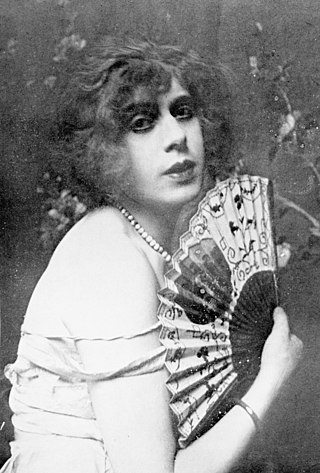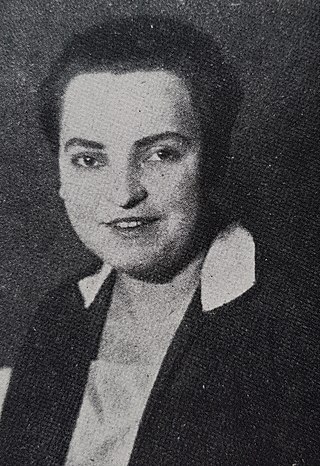Related Research Articles

Transvestism is the practice of dressing in a manner traditionally or stereotypically associated with a different gender. In some cultures, transvestism is practiced for religious, traditional, or ceremonial reasons. The term is considered outdated in Western cultures, especially when used to describe a transgender or gender-fluid person.

Lili Ilse Elvenes, better known as Lili Elbe, was a Danish painter, transgender woman, and among one of the earliest recipients of sex reassignment surgery.

Karl Hermann Johannes Thiele was a German zoologist specialized in malacology. Thiele was born in Goldap, East Prussia. His Handbuch der systematischen Weichtierkunde is a standard work. From 1904 until his retirement in 1925 he was the curator of the malacological collection at the Museum für Naturkunde in Berlin. Thiele described more than 1.500 new species of molluscs; until today their types are deposited with the Museum of Natural History in Berlin. Especially important are his works on the Mollusca of the First German Antarctica Expedition and of the German Deep Sea Expedition aboard the vessel Valdivia.

Peter Ulrich Weiss was a German writer, painter, graphic artist, and experimental filmmaker of adopted Swedish nationality. He is particularly known for his plays Marat/Sade and The Investigation and his novel The Aesthetics of Resistance.
Friedrich Radszuweit was a German manager, publisher, and author and LGBT activist, who was of major importance to the first homosexual movement.
Ruth Margarete Roellig was a German writer, she is known for documenting Berlin's lesbian club scene of the late 1920s during the Weimar Republic. Additionally she published support of Nazism starting in the 1930s, and she stopped writing after the end of World War II.

Die Freundin was a popular Weimar-era German lesbian magazine published from 1924 to 1933. Founded in 1924, it was the world's first lesbian magazine, closely followed by Frauenliebe and Die BIF. The magazine was published from Berlin, the capital of Germany, by the Bund für Menschenrecht, run by gay activist and publisher Friedrich Radszuweit. The Bund was an organization for homosexuals which had a membership of 48,000 in the 1920s.

Selma "Selli" Engler was a leading activist of the lesbian movement in Berlin from about 1924 to 1931.
Garçonne was a Weimar-era German magazine for lesbians. It was published from 1926 to 1930 under the title Frauenliebe and from 1930 to 1932 as Garçonne.

Transgender rights in the Federal Republic of Germany are regulated by the Transsexuellengesetz since 1980, and indirectly affected by other laws like the Abstammungsrecht. The law initially required transgender people to undergo sex-reassignment surgery in order to have key identity documents changed. This has since been declared unconstitutional. The German government has pledged to replace the Transsexuellengesetz with the Selbstbestimmungsgesetz, which would remove the financial and bureaucratic hurdles necessary for legal gender and name changes. Discrimination protections on the basis of gender identity and sexual orientation vary across Germany, but discrimination in employment and the provision of goods and services is in principle banned countrywide.
The Third Sex may refer to:
Das dritte Geschlecht is German for "the third sex" or "the third gender". It may refer to:

A transvestite pass was a doctor's note recognized by the governments of Imperial Germany and the Weimar Republic – under the support of sexologist Magnus Hirschfeld – identifying a person as a transvestite. Transvestite at this time referred to all individuals whose gender identity or preferred clothing was discordant to that associated with their assigned sex, and so included both cross-dressing and transgender people. As gender-confirming surgery was only an emerging practice in the early 20th century, obtaining a Transvestitenschein, along with an official name change, represented the maximum extent to which many trans individuals could transition.

Charlotte "Lotte" Hedwig Hahm was a prominent activist of the lesbian movement in Berlin during the Weimar Republic, National Socialist period, and after 1949, in the Federal Republic of Germany.

Willi Pape was a celebrated German dancer, variety show performer and later a bar owner in Weimar Berlin who was contemporarily referred to as a "transvestite."
Anna Hájková is a Czech-British historian who is currently a faculty member at the University of Warwick. She specializes in the study of everyday life during the Holocaust and sexuality and the Holocaust. According to Hájková, "My approach to queer Holocaust history shows a more complex, more human, and more real society beyond monsters and saints."

The first homosexual movement was a socio-political movement which thrived in Germany from the late nineteenth century until 1933. The movement began in Germany because of a confluence of factors, including the criminalization of sex between men and the country's relatively lax censorship. German writers in the mid-nineteenth century coined the word homosexual and criticized its criminalization. In 1897, Magnus Hirschfeld founded the world's first homosexual organization, the Scientific-Humanitarian Committee, whose aim was to use science to improve public tolerance of homosexuality and repeal Paragraph 175. During the German Empire, the movement was restricted to an educated elite, but it greatly expanded in the aftermath of World War I and the German Revolution.

Gerd Katter was a German apprentice carpenter, insurance agent and patient of the notable German physician and sexologist, Magnus Hirschfeld.
In Nazi Germany, transgender people had a variety of experiences depending on whether they were considered "Aryan" or capable of useful work. According to the Museum of Jewish Heritage, the Nazi German government "brutally targeted the trans community, deporting many trans people to concentration camps and wiping out vibrant community structures."

Paragraph 183 is a public indecency law of the German Criminal Code, which prohibits "sexual self-determination" and public exhibitionism. From its adoption in 1871, at an increasing rate during the rise of the Nazis, and until as late as the mid-20th century, the law was used to enforce penalties for cross-dressing and homosexual acts. As of 2021, the law's scope is limited to indecent exposure.
References
- ↑ Birkhold, Matthew H. (15 January 2019). "A Lost Piece of Trans History". The Paris Review.
- ↑ Journal, Retrospect (21 February 2021). "Gender Nonconforming Lives in Interwar Germany". Retrospect Journal.
- ↑ "Almost Forgotten Voices: The Transvestite Magazine of Weimar Berlin". Making Queer History. Retrieved 30 May 2022.
- ↑ Rainer Herrn: Die Zeitschrift Das 3. Geschlecht in: Rainer Herrn (Hrsg.): Das 3. Geschlecht - Reprint der 1930 - 1932 erschienen Zeitschrift für Transvestiten, 2016, ISBN 9783863002176, p. 231 ff.